Here’s what you need to know about channel glass to get started on your next project.

When architects and building professionals choose channel glass, the decision is typically driven by the desire to achieve a specific aesthetic. The glass has such a distinctive appearance that it greatly impacts the overall design.
Fortunately, designers have a broad range of options in channel glass at their disposal, including different colors, textures and degrees of translucency.
Standard Channel Glass
Due to its iron content and relative thickness, standard channel glass has an inherent slight green hue. The surface texture is lightly dimpled, providing a moderate level of translucency. Both color and texture can be altered to create a different aesthetic for a particular project or to meet specific performance requirements.
Surface Textures
The optical qualities of channel glass are due largely to its surface texture. The standard surface can be replaced with one that offers a higher degree of clarity and minimal texture, or enhanced patterns that increase privacy (with fluted waves, thin lines or a netted surface). To visualize how light plays through all available surface options, visit TGP’s Pilkington Profilit Texture Tool.


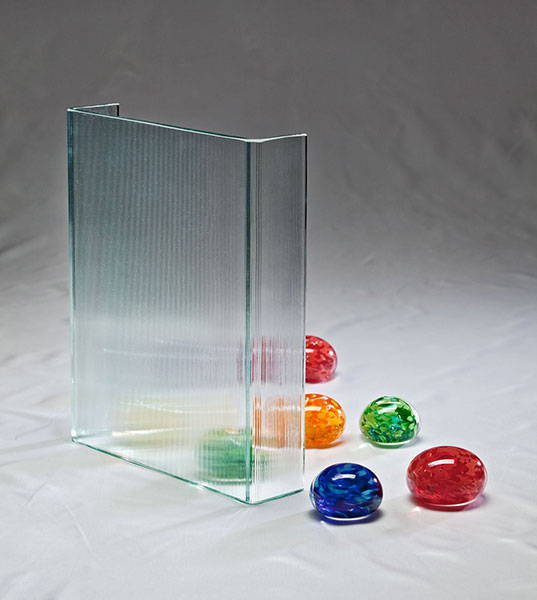


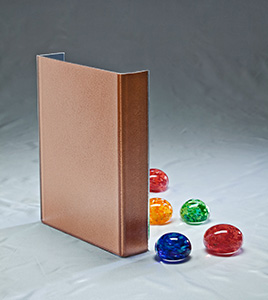
Color
Channel glass is available in a wide array of colors that are achieved in multiple ways. A subtle translucent blue color can be added during manufacturing. For an variety of opaque color options, enameled frit can be heat tempered to the glass.
To obtain even more dramatic colors, a high performance coating is applied to the glass that doesn’t require tempering and is bonded to the glass with remarkably high adhesion strength (exceeded only by ceramic frit). This method makes it possible to achieve a wide array of opacities and even use metallic colors with varying translucency. Most RAL color system options are available. Learn more about Pilkington Profilit™ with TGP ProColor®. You can also read how this product was used to dress up an upscale casino here.
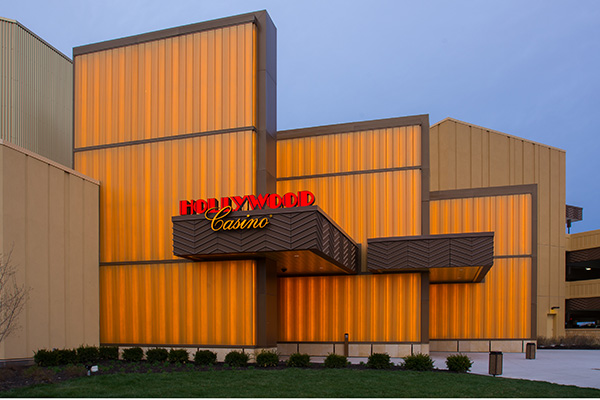
Low-Iron
The lower the iron content, the clearer the channel glass and the greater amount of daylighting available. Pilkington Profilit™ OW (Low-Iron) allows the passage of light to fill interior or exterior spaces. The low iron content enables a less green appearance than typical standard glass. These low-iron cast glass channels are self-supporting and consist of extruded perimeter frames. See how Pilkington Profilit OW was incorporated into a Federal Courthouse in San Diego, CA.
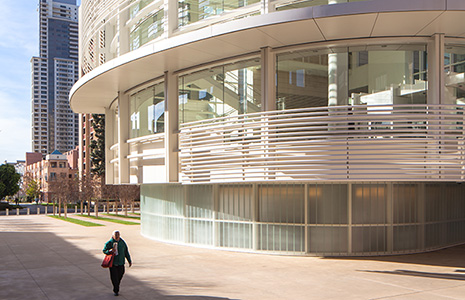
Functional Coatings
One of the main benefits of channel glass is its ability to allow teams to design with daylight. An Amethyst coating is a common pyrolytic coating that can be added to any channel glass design. The coating shifts the color from its standard green cast to blue.
A Low-E coating can increase the energy efficiency of the system by improving the U-value of the glass. It accomplishes this by reflecting infrared light (i.e. heat energy) back into the building during the cold months and reflecting or absorbing energy from the outside to reduce the amount of excess heat coming into the building during the summer. As a result, uninsulated channel glass with a Low-E coating can reduce the U-value to 0.45.
While a Low-E coating can be applied to all available channel glass textures, it cannot be sandblasted as this will strip the coating off, eliminating the performance benefit.
Channel glass with a solar coating helps reduce the total solar radiation transmittance into the building, resulting in an approximate SHGC value of 0.38. It is translucent with a slight bronze tint and can be applied to all available channel glass textures. As with Low-E coatings, it cannot be sandblasted.
Learn more about available functional coatings by visiting Pilkington Profilit Design Options.
Sandblasting
Sandblasted channel glass is ideal for applications requiring a more obscure appearance or greater opacity, such as offices, entryways or lounge rooms. It allows for light transfer while obscuring vision in a visually engaging manner. Typically, sandblasting can be applied to all textures, unless they already have a surface-applied specialty coating. Sandblasted surfaces should be treated with a polymer type coating to protect against finger and handling marks.
Visit Pilkington Profilit Design Options to learn more about available sandblasting options.
Channel glass architecture has become synonymous with softly lit, design-forward spaces, ranging from offices and institutions to common areas in multi-family buildings. The secret to how this architectural glass option can be used in many distinct ways and forms lies in the translucent, “U”-shaped, self-supporting cast-glass channels. Held in place by an extruded aluminum perimeter frame, the linear segments can be installed in applications that soar vertically, curve around a structure and even ripple like a ribbon— while filling the space with warm, indirect light. Architects can leverage channel glass’ various textures, light-diffusing capabilities and ability to create distinct spaces to create unique concepts. So, how to use channel glass in modern designs?
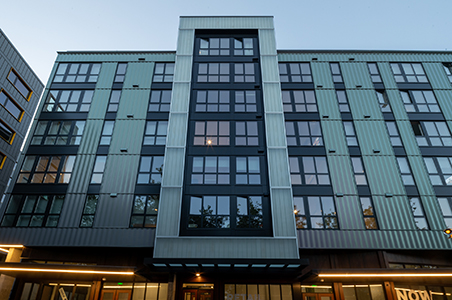
Design freedom
To achieve timeless yet dramatic glazed surfaces, channel glass can be installed in long, linear sequences, vertically as well as horizontally. The slender frames and narrow segments also allow for tight radii – as low as 6’ 6”. This makes it possible to realize dynamic configurations including curved, raked and serpentine patterns to enhance a building’s form.
Continuous glazing spans
While subject to a building’s design-imposed wind loads, channel glass designs can span 23 feet without interruption in vertical applications. They can also span 13 feet in horizontal arrangements. This possibility allows designers to create tall, sweeping glazed walls on storefronts and facades that add as much visual interest as they do daylight.
Enhanced performance
Channel glass is also available with functional coatings that can help designers meet specific project demands without sacrificing on a light-filled space or aesthetic appeal. Options include low-e coatings that can reduce the U-value to 0.49. When insulated with Lumira® Aerogel, channel glass can achieve a U-value of 0.19. Additionally, a solar coating can also help reduce the total solar radiation transmittance into the building, resulting in an approximate solar heat gain coefficient (SHGC) value of 0.38.
Integrating channel glass with performance coatings can help reduce overall energy consumption of the project and meet building codes without tradeoffs while also enhancing daylight design.
Visual play with textures
The inherent milky texture of channel glass balances the need for illumination and privacy. It allows natural light to pass through, creating a soft, even glow in a space but the textured surface distorts visibility, preventing clear views from either side.
To meet project-specific requirements, the cast-glass channels are also available in a diverse range of textures — from smooth and unpatterned to intricate designs with lines, waves and grooves. In application, architectural glass with more complex textures filters light to a greater degree, which makes it ideal in spaces where enhanced privacy is important, such as offices, conference rooms and lounges.
Bold, colorful surfaces
When it comes to the advantages of using channel glass in modern buildings, the world of color also offers creative solutions. Designers can specify channel glass with translucent, light-hued coatings to provide a subtle hint of color on surfaces. They can also choose colored ceramic frits with varying hues to create opaque and vibrant privacy screens.
Technical Glass Products offers Pilkington Profilit™ channel glass systems with a variety of design options to meet project needs.